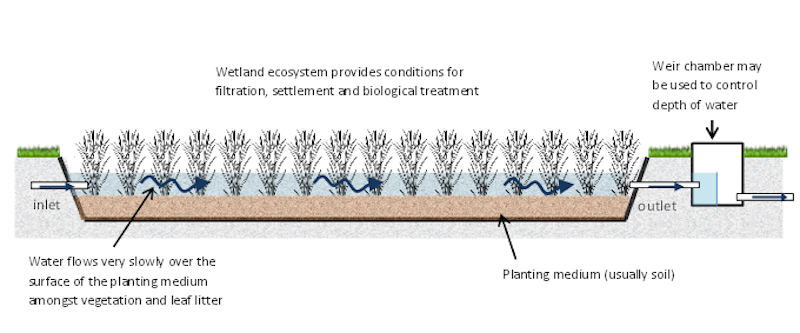
This type of wetland operates in a very naturalistic way. Shallow water is allowed to flow slowly through a bed of wetland plants. Treatment is achieved through the physical processes of filtration and settlement, and through the microbiology that becomes established on the stems and leaf litter that fall onto the wetland surface. Oxygen is made available directly from the air and through the wetland plants, though some low- oxygen areas also remain in the depths of the wetland, making for a diverse biochemical environment.
These wetlands are suitable for a wide range of applications, and are particularly useful for applications with a high suspended solid load, or wide variation of flow rates.
The main design challenges are to size the wetland correctly to achieve sufficient treatment and to make the wetlands efficient by distributing the water evenly. Generally speaking it is much easier to do this with 'long, thin' wetlands than more square or round ones. The velocity of the water is an important consideration. If the water flows too fast, or becomes too deep, plant growth will suffer, resulting in bare patches in the wetland in which water will flow rapidly and treatment will be impaired.